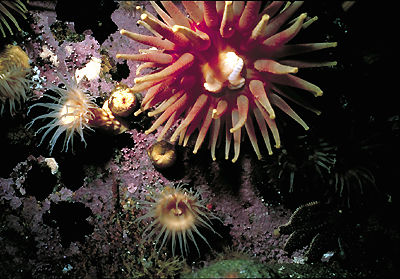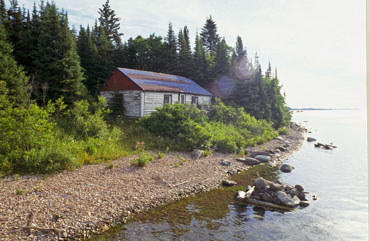Located on northern Baffin Island in Canada's High Arctic, Sirmilik National Park (agreement signed 1999; 22 250 km2) is one of Canada's isolated and most spectacular national parks. Sirmilik is an Inuktitut word that means "place of glaciers."
Natural History
Sirmilik National Park comprises 3 separate land components. Oliver Sound, south of Pond Inlet, is a long narrow fjord surrounded by high cliffs, glaciers and ice caps. The Borden Peninsula is an extensive plateau dissected by broad river valleys and includes Baillarge Bay, a seabird colony. Bylot Island is a spectacular area of rugged mountains, icefields and glaciers. It was first established as a bird sanctuary in 1965 and is jointly protected with the Canadian Wildlife Service because of its impressive seabird colonies, including thick-billed murres and black-legged kittiwakes.
The coastal lowlands of Bylot Island are the nesting area for a large colony of greater snow geese. Within the park there are also caribou, arctic fox, wolf, arctic hare and many other species of birds. Lancaster Sound and the other marine waters located adjacent to the park are extremely rich and support high concentrations of marine wildlife such as polar bear, bowhead and beluga whales, narwhal, seals and walrus.
Human History
Hundreds of archaeological sites are evidence of thousands of years of use and occupancy by the ancestors of the present-day Inuit. There is also evidence of more recent activity by European whalers and explorers searching for the Northwest Passage. The area continues to be used extensively for hunting and fishing by local Inuit.
Park Facilities
Park staff are located in Pond Inlet and Iqaluit. The visitor season is short (spring and summer); most visitors travel by air to Pond Inlet or Arctic Bay and then travel to the park by ski, snowmobile or boat. Hiking, cross-country skiing and floe-edge wildlife viewing are the most popular ways to experience this dramatic northern landscape.

 Share on Facebook
Share on Facebook Share on X
Share on X Share by Email
Share by Email Share on Google Classroom
Share on Google Classroom


